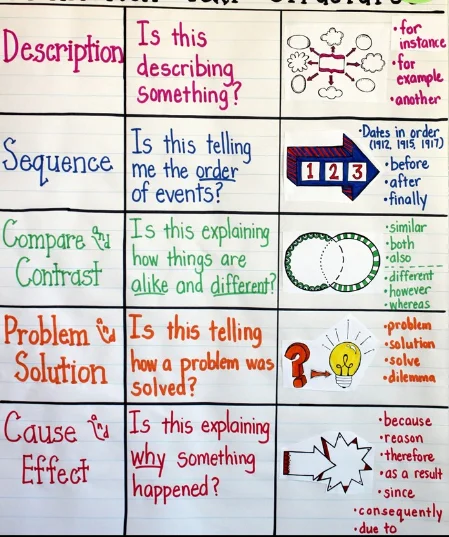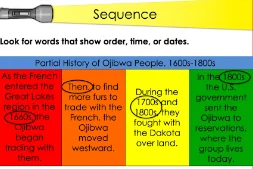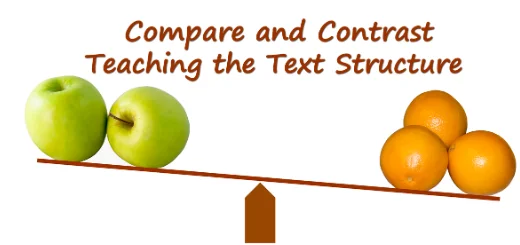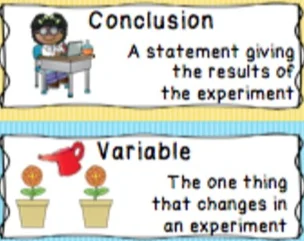13 Types of Text Structure: Definition and Examples for Each

Understanding text structure is essential for effective communication. Text structure refers to how written content is organized, providing a framework for comprehending information.
It serves the purpose of guiding readers or listeners through the text, making it easier to follow, understand, and retain the content.
The choice of text structure significantly influences communication, shaping how information is presented, emphasizing key points, and connecting ideas.
Different text structures suit various types of content, ranging from narratives to informational texts.
Let’s delve into 13 distinct text structures, offering definitions and examples to enhance your grasp of this vital aspect of written and spoken communication.
13 Types of Text Structure

1. Narrative Text Structure
Narrative text structure is a storytelling method that weaves a sequence of events into a coherent narrative, engaging readers with compelling stories.
Characteristics of narrative texts include a plot that unfolds with a beginning, middle, and end, a focus on characters and their development, and the use of descriptive language to create vivid imagery.
Critical elements of a narrative typically involve setting, characters, conflict, climax, and resolution.
Examples of narrative texts encompass a wide range, from novels and short stories to personal anecdotes, myths, and folktales.
2. Descriptive Text Structure
Descriptive text structure is a writing style that paints a vivid picture in the reader’s mind by providing rich sensory details.
Characterized by its emphasis on creating a sensory experience, descriptive texts use imagery, adjectives, and figurative language to engage the reader’s senses.
These texts often describe people, places, objects, or experiences in intricate detail, fostering a deeper connection between the reader and the subject matter.
Sample descriptive texts range from travelogues and nature essays to product reviews and poetic descriptions.
Through its immersive qualities, the descriptive text structure allows readers to visualize, hear, smell, taste, and touch the content, enhancing their understanding and emotional engagement.
3. Expository Text Structure
Expository text structure is a mode of writing that aims to explain and inform, emphasizing clarity and objectivity.
Key characteristics of expository texts include a focus on facts, evidence, and logical organization.
There are various expository texts, such as cause and effect, compare and contrast, problem-solution, and more, each tailored to a specific purpose in conveying information.
One should start with a clear thesis statement, provide supporting evidence or examples, and maintain a logical flow of ideas to write an expository text effectively.
Expository texts are commonly found in textbooks, news articles, research papers, and instructional manuals, serving as valuable tools for delivering information and enhancing understanding.
4. Persuasive Text Structure
Persuasive text structure is a powerful form of writing that seeks to influence and sway the opinions, beliefs, or actions of the audience.
Characteristics of persuasive texts include a clear, compelling argument or stance, a focus on convincing language, and a call to action.
Various techniques and strategies are employed, including emotional appeals, statistics, expert testimonials, and rhetorical devices, to achieve persuasion.
Analyzing persuasive texts involves evaluating the strength of the argument, the credibility of the sources, and the effectiveness of persuasive techniques in achieving the desired outcome.
Persuasive texts are frequently found in advertisements, editorials, political speeches, and debates, designed to inspire change or reinforce specific viewpoints.
5. Chronological Text Structure

Chronological text structure is a method of organizing information in a sequence based on time, allowing readers to follow events in a clear and logical order.
Characteristics of chronological texts include:
- A timeline of events.
- A focus on cause-and-effect relationships.
- The presentation of historical or step-by-step information.
To enhance this structure, time-order words like “first,” “next,” “then,” and “finally” are employed to signal transitions between events.
Real-life examples of chronological texts include historical accounts, biographies, recipe instructions, and travel itineraries.
6. Sequential Text Structure
Sequential text structure is a format of writing that details a series of steps or actions in a logical order, guiding readers through a process or procedure.
Critical characteristics of sequential texts include:
- A clear, step-by-step presentation.
- The use of imperative verbs.
- An emphasis on clarity and precision.
These texts often break down complex tasks into manageable, understandable parts. Examples of sequential text include instructional manuals, recipes, DIY guides, and technical procedures.
7. Problem-Solution Text Structure
The problem-solution text structure is a compelling writing style that focuses on addressing issues and providing practical solutions.
Characteristics of problem-solution texts include the identification of an apparent problem or challenge, followed by a well-reasoned proposal for resolving it.
These texts often emphasize the importance of the problem and the viability of the suggested solution.
Real-life case studies of problem-solution texts can be found in environmental policies, public health initiatives, and business proposals.
8. Compare and Contrast Text Structure
Compare and contrast text structure is a form of writing that highlights the similarities and differences between two or more subjects, ideas, or concepts.

Characteristics of compare and contrast texts include the presentation of both commonalities and distinctions, often through the use of comparative language like “similarly,” “on the other hand,” and “in contrast.”
To effectively employ this structure, one must carefully analyze the subjects, drawing out their key features and distinctions.
Compare and contrast essays typically follow a clear structure, introducing the subjects, providing comparative details, and drawing conclusions based on the analysis.
Mostly, this text structure enhances critical thinking and aids in a deeper understanding of the subjects under consideration.
9. Cause and Effect Text Structure
Cause and effect text structure is a method of writing that explores the relationships between events, identifying the reasons behind specific outcomes or consequences.
Characteristics of cause and effect texts include a focus on causal connections, the use of terms like “because,” “as a result,” and “due to,” and an emphasis on understanding the impact of actions or events.
To effectively employ this structure, writers must analyze the causes and their corresponding effects in a logical sequence.
Cause and effect diagrams, such as fishbone or Ishikawa diagrams, represent these relationships visually.
Finally, this text structure helps readers comprehend the underlying factors that drive various outcomes and consequences.
10. Spatial Text Structure
Spatial text structure is a form of writing that focuses on the arrangement and organization of physical space.
Features of spatial texts include using descriptive language to paint a clear picture of the environment, whether geographical or architectural.

Spatial organization in writing often follows a logical pattern, guiding the reader through a space from one point to another, allowing them to visualize and understand the layout and details.
Geographical descriptions offer insights into landscapes, regions, or places, while architectural descriptions delve into the design and layout of structures and spaces.
Remember, this text structure is crucial for conveying a sense of place and facilitating comprehension of the physical world.
11. Definition Text Structure
Definition text structure is a mode of writing that aims to provide clear and concise explanations of concepts, terms, or ideas.
The definition texts include a focus on precision and clarity, typically using formal language to eliminate ambiguity.
Writers strive to convey the essence and meaning of a subject straightforwardly. These texts often employ concise yet comprehensive descriptions to ensure readers grasp the intended meaning.
Glossaries and dictionaries are valuable resources that exemplify this structure, offering definitions to facilitate understanding of unfamiliar words or concepts.
Definition text structure aids in building strong foundational knowledge and promoting effective communication by eliminating confusion and ambiguity.
12. Classification Text Structure
Classification text structure involves categorizing information into distinct groups or classes based on shared characteristics. Characteristics of classification texts include:
- The systematic organization of data.
- The identification of criteria for grouping.
- The presentation of clear categories.
In this structure, information is often grouped according to common traits or features, allowing for better understanding and analysis.
Taxonomies and classifications are typical examples of this text structure, often used in biology, library science, and marketing to create order from complexity.
Classification text structure aids in simplifying complex information, making it more manageable and accessible for readers, researchers, and professionals in various domains.
13. Mixed Text Structure
Mixed text structure, or hybrid text structure, involves using multiple text structures within a single piece of writing.
Writers use narrative, expository, descriptive, and other structural elements to convey their message effectively. This approach allows for a more versatile and engaging way of presenting information, accommodating various purposes and audiences.
After incorporating different text structures, writers can tell stories, provide explanations, create vivid descriptions, and make persuasive arguments, all within a single composition.
Mixed text structure offers flexibility and creativity in delivering content and is often used to capture readers’ interest and maintain engagement.
Conclusion
In the realm of written communication, understanding text structure is paramount. We’ve explored 13 distinct text structures, each with a unique purpose and characteristics.
From the captivating narratives that tell stories to the informative, expository texts that elucidate and the persuasive compositions designed to sway opinions, these structures provide the framework for effective communication.
Descriptive and chronological texts allow us to visualize and follow sequences, while problem-solution texts tackle real-world challenges.
Compare and contrast texts help us grasp differences and similarities, and cause-and-effect texts unravel the intricate web of causality.

Josh Jasen or JJ as we fondly call him, is a senior academic editor at Grade Bees in charge of the writing department. When not managing complex essays and academic writing tasks, Josh is busy advising students on how to pass assignments. In his spare time, he loves playing football or walking with his dog around the park.




